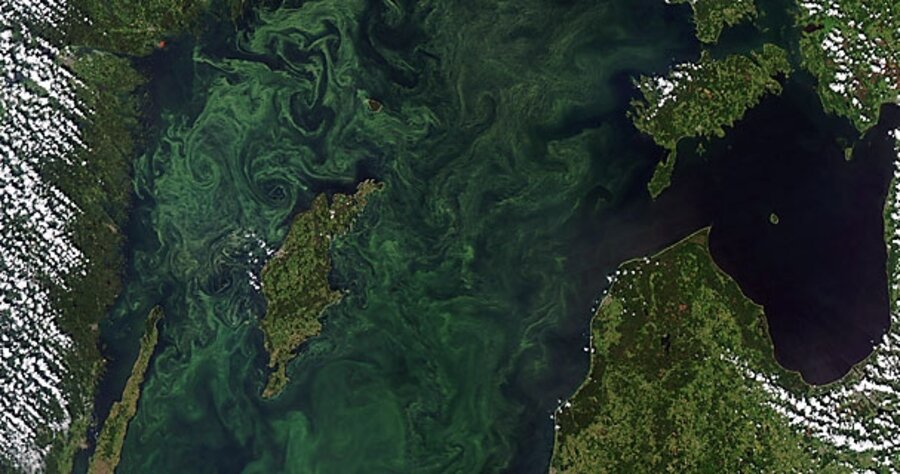Ocean 'dead zones' growing
Loading...
Dead zones – areas of oxygen-depleted bottom waters – are spreading at an alarming rate in coastal waters, killing off huge amounts of marine life, a new study has found.
In a paper published today in Science, Robert Diaz, a biological oceanographer at the Virginia Institute of Marine Science, and Rutger Rosenberg, a marine ecologist at Sweden's Göteborg University, identified more than 400 dead zones worldwide, affecting an area of more than 95,000 square miles, an area roughly the size of Oregon. The number and size of these dead zones are far greater than previously estimated.
While some dead zones occur naturally, many are caused or exacerbated by chemical fertilizer runoff, fossil fuels, and rain. The fertilizer, which is rich in nitrogen compounds, is washed away from farmlands into rivers and ends up in the ocean. Burning fossil fuels produces airborne nitrogen oxides, which the rain washes into the ocean.
The nitrogen compounds feed massive algae blooms. When the algae dies, it sinks to the ocean floor where it is consumed by microbes, which also consume oxygen in the process. As the oxygen is depleted, creating a condition called hypoxia, marine life that can flee does, and life that cannot – some fish but also clams, crustaceans, and other bottom dwellers – die of asphyxiation. At that point, microbes that live in oxygen-free environments begin to thrive and produce hydrogen sulfide, a poisonous gas. Most dead zones are seasonal, as the algae thrives in warm water.
According to the authors, the number of these dead zones has doubled every decade since the 1960s.
These findings are not just bad news for sea creatures, but for those whose livelihoods depend on them as well. Diaz told the New York Times that in the Chesapeake Bay, dead zones eliminate 75,000 metric tons of fish food, enough to feed half of the bay's annual harvest of crabs for one year.
Dead zones can bounce back. Until the 1990s, the Black Sea was the site of a major hypoxic area, but a sharp reduction in the amount of fertilizer runoff following the collapse of the Soviet Union allowed marine life to rebound quickly.
This example offers some hope for other dead zones around the world. The San Francisco Chronicle quotes Jane Lubchenco, a leading marine biologist, who says that the problem, while serious, is solvable.
"The evidence suggests that if the spigot of nutrients can be turned off, coastal systems can recover," she said. "Doing it can be accomplished by using fertilizers more efficiently, preventing human and animal sewage from entering rivers, and replanting vegetation [along riverbanks] to absorb excess nutrients."
But Diaz cautions that turning off the spigot won't be so easy. "Nitrogen is very slippery; it's very difficult to keep it on land," he told Scientific American. "We need to find a technology to keep nitrogen from leaving the soil."
This 2007 graphic (via Newscom), shows some of the world's largest dead zones:





